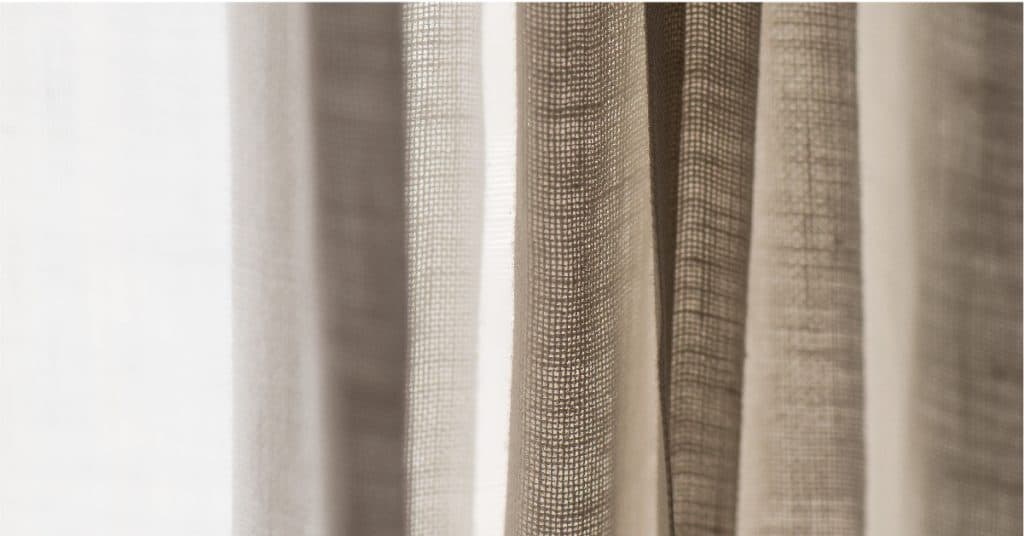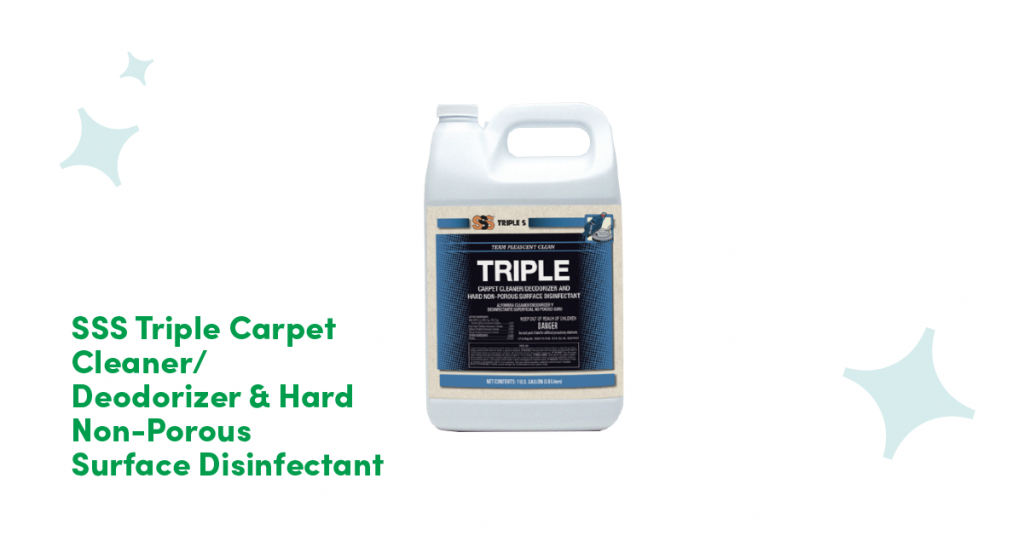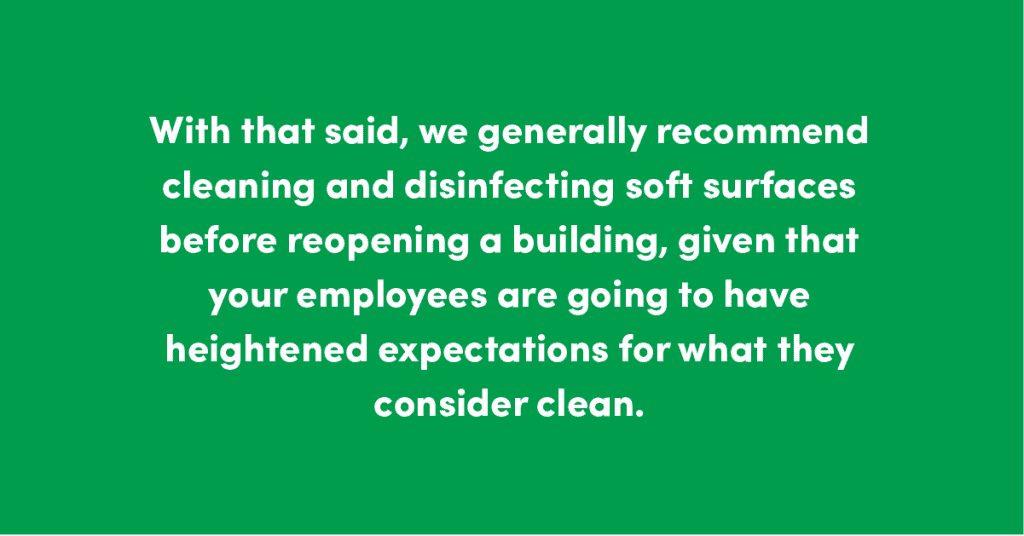Walk into almost any store, office or clinic and you’ll see someone wiping down door handles and spraying tables with disinfectant. What you may not see is another important side of cleaning: Soft-surface disinfection.

While it’s relatively easy to disinfect hard surfaces if you have the right chemicals and training, soft surfaces such as upholstery, drapes and furniture aren’t as straightforward. The reason may be obvious: Soft surfaces absorb chemicals, which can leave them wet and potentially damaged.
Luckily, we have proven methods for disinfecting soft surfaces. While you won’t perform this task nearly as often, it’s an important part of your cleaning program. For that reason, we’ve laid out what chemicals and tools we recommend.
Preferred soft-surface disinfectants
Unfortunately, there aren’t a lot of chemicals designed for soft surfaces that are approved by the Environmental Protection Agency (EPA) to kill COVID-19.
We prefer Triple S’s SSS Triple Carpet Cleaner/Deodorizer & Hard Non-Porous Surface Disinfectant. While originally designed as a carpet cleaner, it works wonderfully on other soft surfaces without leaving a residue.

Along with being one of only a few antimicrobial products to kill COVID-19 in carpets and soft surfaces, Triple S’s product also works as a cleaner and deodorizer. Any time we can tackle three jobs with one chemical, we’re fans.
Tools for the job
Given that the best chemical for the job was originally designed for cleaning commercial carpets, it’s meant to be extracted.
Use a portable spot remover and cleaner when disinfecting soft surfaces with Triple S’s cleaner. These machines have a wand that allows you to spray the disinfectant and then extract it using suction.
This process is generally most effective when disinfecting things like chairs, couches in your lobby or other pieces of furniture. A portable extraction unit requires you to take drapes and curtains down to disinfect them.
For drapes and curtains, we’re also using the Blue Evolution steamer that uses UV to disinfect. We’ve had good results so far, and likely will continue to use them in facilities such as clinics, where frequent soft-surface disinfection is needed.
How often do you disinfect soft surfaces?
This admittedly is the most difficult thing to pin down. We generally like to assess the industry, infection-control needs and foot traffic for a facility before making a recommendation.

With that said, we generally recommend cleaning and disinfecting soft surfaces before reopening a building, given that your employees are going to have heightened expectations for what they consider clean.
After reopening, we find many industries will do a deep cleaning of soft surfaces annually. In health care, it’s common to do it quarterly – if not more often.
If you’re unsure what you need for soft-surface disinfection give us a call. We’re always happy to talk through your facility’s specific needs to help you develop a program that works.
About the author
Mike Staver is director of operations at KleenMark, where he oversees a team of more than 800 technicians who clean more than 25 million square feet each day.
